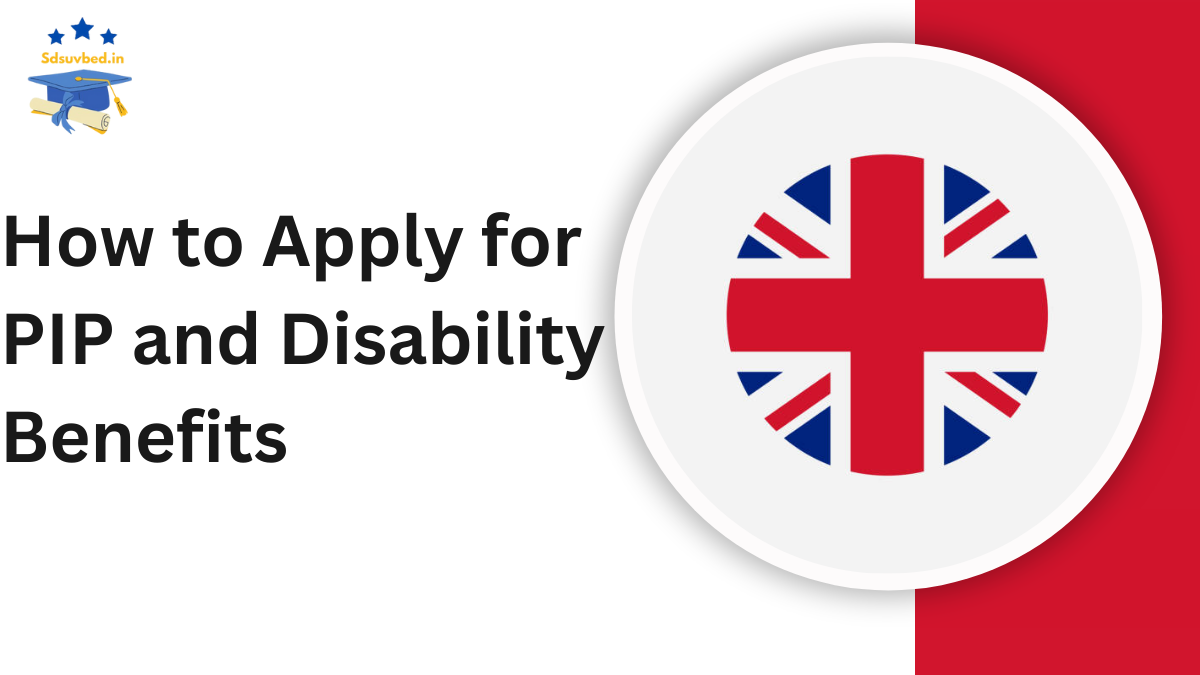Disability benefits such as Personal Independence Payment (PIP), Adult Disability Payment (ADP), and Attendance Allowance (AA) are essential lifelines for millions of individuals in Great Britain who live with long-term health conditions. These benefits aim to help recipients manage daily living and mobility challenges, ensuring a better quality of life.
Navigating the application process, however, can be daunting. A former employee of the Department for Work and Pensions (DWP) has shared valuable insights to simplify the process and improve your chances of success. With over 40 years of experience in the welfare system, this insider offers advice on how to prepare your application, avoid common pitfalls, and safeguard your benefits.

Overview of Disability Benefits
Disability benefits are financial aids provided to individuals with health conditions that significantly impact their ability to carry out daily tasks. Here’s a snapshot of the three main disability benefits in the UK:
| Benefit | Purpose | Number of Claimants |
|---|---|---|
| Personal Independence Payment (PIP) | Assists working-age adults with daily living and mobility needs. | 3.6 million |
| Adult Disability Payment (ADP) | The Scottish equivalent of PIP for eligible adults. | 315,000 |
| Attendance Allowance (AA) | Supports individuals aged 65+ with care needs. | 1.6 million |
These benefits are tailored to different age groups and circumstances, ensuring comprehensive support for those in need.
Dos and Don’ts for Claiming Disability Benefits
Applying for disability benefits requires careful attention to detail and proper documentation. Here are key dos and don’ts to ensure your application is successful.
Dos
Keep a Copy of Your Claim Form
Always retain a copy of your completed claim form. This serves as a reference for future reviews and reassessments. It helps you:
- Avoid discrepancies during updates or appeals.
- Maintain consistency in your responses.
- Identify areas for improvement in case of rejection.
Request a Copy of Your PIP 2 Evidence Form
The PIP 2 form (health questionnaire) is a critical document that details how your condition impacts your daily life. Contact the PIP enquiry line at 0800 121 4433 to request a copy of your form. Having this form ensures you can explain how your health has evolved over time, especially during reviews or appeals.
Document Any Changes in Your Condition
Health conditions can change, and it’s crucial to document these updates. Keep records of:
- New medical diagnoses.
- Changes in mobility or care needs.
- Updated prescriptions or treatments.
These records provide solid evidence to support your claim during reviews.
Take Your Time Completing the Forms
Disability benefit forms are lengthy and require detailed responses. Rushing through them can result in errors or omissions. Instead:
- Tackle sections gradually.
- Review your answers thoroughly before submission.
- Seek assistance from a trusted advisor if needed.
Seek Expert Help if Necessary
If you’re unsure about your application or have been denied benefits, reach out to organizations specializing in disability support. Experts can provide guidance on:
- Completing the forms.
- Strengthening your claim with additional evidence.
- Navigating the appeals process.
Don’ts
Avoid Conflicting Information
Inconsistent responses during reviews can raise red flags with the DWP. Always refer to your original claim form when providing updates to ensure consistency.
Do Not Rush
Hasty applications are prone to errors that can delay or jeopardize your claim. Allocate sufficient time to complete the forms and double-check every section.
Potential Payments for Claimants
The financial support provided through disability benefits varies based on the severity of the condition. Here’s a breakdown of current rates:
| Benefit | Weekly Payment | Four-Week Total |
|---|---|---|
| PIP/ADP (Minimum) | £28.70 | £114.80 |
| PIP/ADP (Maximum) | £184.30 | £737.20 |
| Attendance Allowance (Lower Rate) | £72.65 | £290.60 |
| Attendance Allowance (Higher Rate) | £108.55 | £434.20 |
Understanding these amounts can help you plan your finances better and ensure you’re receiving the correct level of support.
Importance of Consistency and Documentation
A former DWP employee emphasized the importance of maintaining consistency in your applications and keeping detailed records. Here’s why:
- Consistency Avoids Scrutiny:
Conflicting information in your responses can lead to delays or additional reviews. - Documentation Strengthens Claims:
Keep copies of all forms, medical evidence, and correspondence with the DWP to back your claims during appeals or reviews. - Appeals and Rejections:
If your claim is denied, detailed documentation provides clarity on what was initially submitted, helping you identify areas for improvement.
FAQs
What is PIP?
PIP is a benefit for individuals aged 16–64 who need help with daily living or mobility due to a health condition or disability.
How do I apply for disability benefits?
Start by contacting the relevant authority (e.g., DWP for PIP) to request an application form. Complete the form thoroughly and provide supporting evidence.
What happens if my application is rejected?
You can appeal the decision by requesting a Mandatory Reconsideration and providing additional evidence to support your case.
How long does it take to process a PIP claim?
Processing times vary, but it typically takes 8–16 weeks from application submission to decision.
Can I receive more than one benefit?
Yes, you may qualify for multiple benefits, such as PIP and Attendance Allowance, depending on your circumstances.
Are PIP payments taxable?
No, PIP payments are not taxable and do not count as income for most benefits.
How can I update my application during a review?
Contact the DWP to provide updated medical evidence or information about changes in your condition.
Can I seek help with my application?
Yes, disability organizations and welfare advisors can assist with completing forms and navigating the process.
A passionate content writer specializing in creating engaging, SEO-optimized content. With expertise in blogs, web copy, and storytelling, I craft words that connect with audiences and deliver results.
